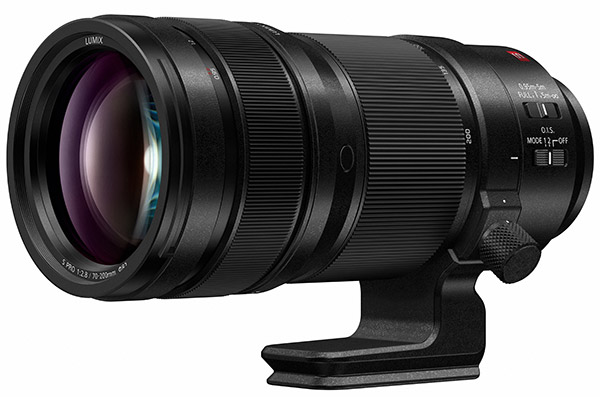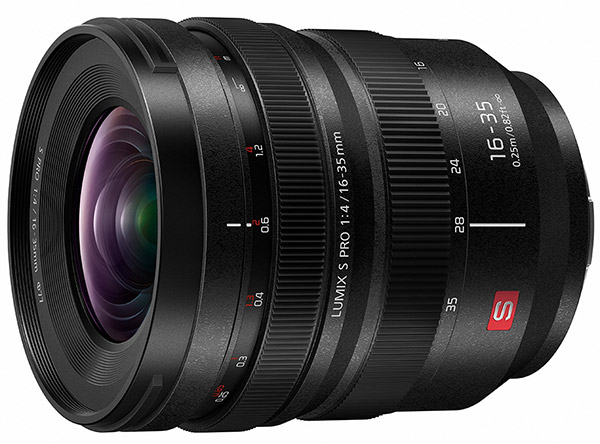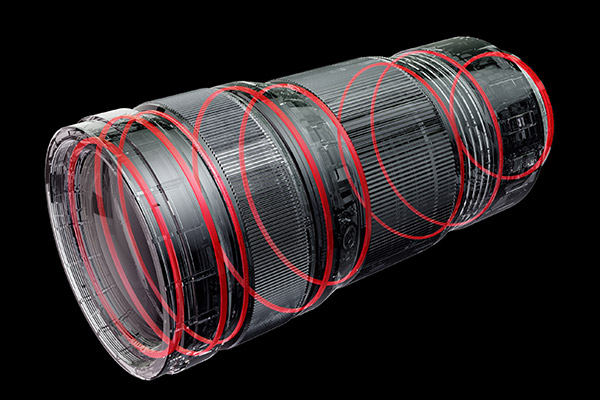Panasonic’s expands Pro-level L-mount lens lineup: New 70-200mm f/2.8, 16-35mm f/4 coming in January
posted Wednesday, November 6, 2019 at 1:00 AM EST

The L-mount lens lineup, spanning the three companies partnering in the L-Mount Alliance, currently offers a wide range of lenses, most of which come from Leica's catalog of lenses at this time. For Panasonic's own selection of L-mount glass for their trio of S Series full-frame cameras, the native selection has been fairly small. To date, there have only been four Lumix S lenses released so far, three zooms and one prime, with the latest lens, the 24-70mm f/2.8 S PRO zoom debuting back in August and going on sale just last month.
Today, however, Panasonic is expanding its quiver of full-frame lenses once more, offering two important and likely extremely popular zooms, the LUMIX S PRO 70-200mm F2.8 O.I.S. and the LUMIX S PRO 16-35mm F4. As with the earlier 24-70mm lens, these two new zooms sport the "PRO" designation, which means these Panasonic-designed lenses are built and tested to meet Leica's strict optical standards.
LUMIX S PRO 70-200mm F2.8 O.I.S.
For many professional and serious enthusiast photographers, a 70-200mm f/2.8 is a classic lens, a key optic for any serious photographer's camera bag, offering a versatile range of focal lengths which make it an excellent choice for a wide array of telephoto-centric subjects, from portraiture to sports. The 70-200mm has been one of the most popular lens styles for decades, and Panasonic already has an f/4 version of the lens, which debuted alongside the first two S-series cameras. However, an f/2.8 variant is a critical lens to have for a growing camera system given its versatility for sports, low-light shooting, and improved usefulness with teleconverters over an f/4 zoom -- it's a must-have lens for any camera system.

The new Panasonic 70-200mm f/2.8 S PRO lens utilizes a different and, interestingly, slightly simpler optical layout than its smaller f/4 sibling, using one less element and no ultra-high-refractive (UHR) elements; though it does use two, rather than one, UED (ultra extra-low dispersion) elements. In total, the 70-200mm f/2.8 lens uses 22 elements situated into 17 groups and includes two UED elements and three ED elements to help suppress chromatic aberration as well as a single aspherical element to correct for astigmatism and improve image resolution. The lens features an 11-bladed circular aperture diaphragm and has an 82mm filter size.
The double focusing system suppresses fluctuations in CA at close distances and results in sharp performance, corner-to-corner, across the zoom range. Additionally, like many other Panasonic Lumix lenses, the autofocusing system operates at a swift 480fps focusing speed for fast, quiet and precise performance. For video shooters, the lens' focusing design offers minimal focus breathing, which prevents noticeable and often-distracting framing changes when adjusting focus.
The onboard optical stabilization system works in tandem with the Panasonic S-series camera's in-body image stabilization. The Dual I.S. 2-compatible lens is said to offer up to a whopping 7-stops of stabilization compensation.
As mentioned, the 70-200mm f/2.8 is a versatile lens when it comes to utilizing teleconverters and is indeed compatible with Panasonic's 1.4x and 2.0x extenders. With the 1.4x attached, the lens offers a reach out to 280mm with a maximum aperture of f/4, or up to 400mm with the 2x with an f/5.6 max aperture.
LUMIX S PRO 16-35mm F4
On the wider end, Panasonic's unveiling its widest lens to date for the S-series cameras with the 16-35mm f/4 wide-angle zoom. Another classic lens for any camera system, the 16-35mm zoom is a versatile lens for a variety of subjects, providing ultra-wide perspectives for vast landscape shots as well as a versatile array of wide-angle focal lengths for general shooting, reportage, close action and more.

The new Panasonic 16-35mm f/4 S PRO lens is comprised of 12 total lens elements organized into nine groups. The lens includes three aspherical elements, an extra-low dispersion (ED) lens and a single ultra-high refractive index lens to help combat aberrations and provide sharp image quality across the frame. According to Panasonic, the 16-35mm f/4 PRO offers impressive resolving power even in the corners when used wide open. The optical design helps provide pleasing bokeh characteristics while at the same time suppressing double-line bokeh and vignetting. The 16-35mm uses a 9-bladed circular aperture diaphragm and has a 77mm filter thread.
The 16-35mm zoom uses a double-magnet linear AF motor for its AF actuator system, which delivers high power in a small, compact design. Like other Lumix lenses, the AF motor's high-speed sensor drive operates at 480fps for fast and precise AF performance. Like the 70-200mm lens, the 16-35mm lens is also designed with videographers in mind and utilizes a focusing system specifically designed for minimal focus breathing. Both the 70-200mm and 16-35mm offer an AF/MF focusing clutch mechanism, which enables instant toggling between AF and MF modes as well as accurate manual focusing.

Both of these new lenses offer substantial weather-sealing, with dust and slash-resistant designs that are also freezeproof down to -10 degrees Celsius (14 degrees F).
Both lenses are set to go on sale in January 2020, with the 70-200mm f/2.8 priced at $2,599 USD and the 16-35mm f/4 at $1,499 USD.